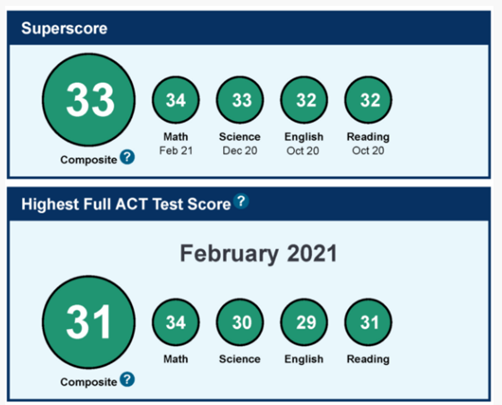It’s the pre-college question you may not expect, but one that’s important to nail down. Long before a school is chosen, even before “Where is she going to college?” comes “Which college entrance exam will she be taking?”
In Minnesota, the ACT has traditionally been the test of choice. Enter the new digital SAT. Students have quickly learned it is a shorter test and that has begun to drive demand. And while it’s true that the new SAT is indeed shorter, it’s also harder.
You might be familiar with the SAT college entrance exam, but perhaps the term “Digital SAT” is new to you. To understand the difference between the old paper version of the SAT and its new digital format, check out our article, “Understanding The Paper SAT vs. The New Digital SAT”.
This quick comparison of the digital SAT vs ACT can help determine which will be best for your student.
Pros of the Digital SAT vs. ACT
1. Shorter Test = More Time To Answer.
Students who take the SAT have a better chance of avoiding test exhaustion with the shorter exam duration. They also have more time to answer each question, reducing the stress of time management.
- SAT = Two hours, 14 minutes. 98 questions. Average time per question 82 seconds
- ACT = Two hours, 55 minutes 215 questions. Average time per question 49 seconds
2. Digital Format For Digital Natives.
Taking an exam on an electronic device such as a laptop, Chromebook, or iPad is now normal for many students, and will likely be more comfortable and familiar for students than a paper test.
·While the ACT also has a digital option, it is not available in all locations.
3. Adapts To Student Ability.
The adaptive test format means that SAT sections (reading/writing and math) are comprised of two stages:
- The first stage is the same for all students.
- The second stage adjusts to meet the level of performance the student demonstrates in the first.
A student who does well in the first stage will receive a more challenging second stage–a key part of achieving a higher score. For a student who struggles with the first stage, the SAT software will deliver an easier second stage, to better gauge actual ability level and help prevent the student from leaving the test feeling deflated.
Cons of the Digital SAT vs. ACT
More Time To Answer = More Complex Questions
Because students have more time to answer, SAT developers are known to include some unique and sometimes unfamiliar approaches to testing concepts. Some questions require students to reason through SAT questions vs. simply choosing straightforward answers, and test-takers may find the question formats different than what they’re used to in the school setting. This makes practice testing important, to build familiarity with the testing approach.
Scoring Impact Of Weighted Questions.
Questions on the ACT are weighted equally – the easiest question on the test is worth just as much as the most difficult question on the test – so it is possible to guess on the most challenging questions and still receive a strong score. That is not the case with the SAT. It is a more sophisticated test where some questions count for nothing; others are more heavily weighted. Careful answers are required throughout the SAT exam as errors on some questions can be quite costly.
Limited Availability.
At this time in Minnesota, seats for the SAT are limited, and students may have to wait to test. SAT popularity has increased with the digital rollout, and schools are not yet meeting current demand. Based on our conversations with schools around the Metro Area, it can be challenging to offer the new digital SAT since students need to show up to the testing site with fully charged testing devices that have the appropriate software already loaded. We’ll all have to stay tuned to see if availability improves.
The Digital SAT vs ACT: Still Not Sure?
Your student can take both a practice digital SAT and a practice ACT exam with us to see which is a better fit. Flying Colors offers practice exams every weekend of the year.
You can learn more and register here. Check it out and start answering the “which test to take” question with confidence.
